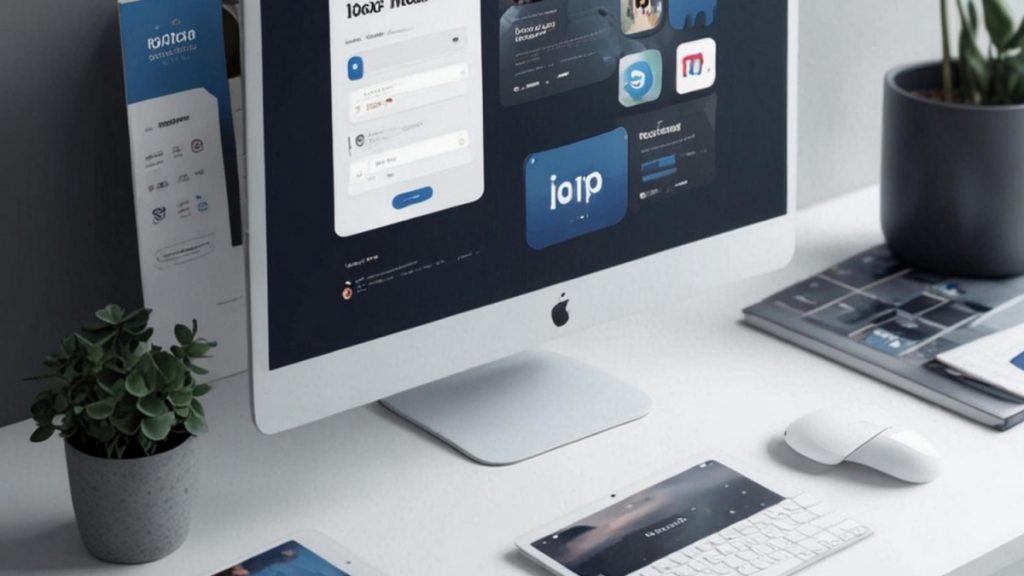Great web design is key to catching people’s attention and making a strong first impression. Web design is important because it affects how a site looks and feels. Studies show that good design makes up 75% of a site’s credibility and 89% of visitors might leave if they don’t like what they see. To ensure your site looks great and works well, it is essential to use the right design tools.
We spoke with Reactive, a team of London web designers, and based on their advice, we have put together a list of the best web design tools to help you choose the right ones for your needs.
Best 10 Web Design Tools
Web design tools help you build and design websites. They make it easier to create a site that looks good and is easy to use. Check out these tools to create a professional and user-friendly website. Let’s get started!
Figma
Finding a list of UX/UI design tools that don’t include Figma will be hard,and there is a good reason for that. Figma is a vector graphics editor. This interface design tool lets multiple designers work on a same project at the same time. Unlike many other web design tools, you can open this software on a browser. It’s perfect if you want an all-in-one tool that handles everything from brainstorming to interactive prototypes, all wrapped up in a user-friendly interface. The platform is cloud-based.
Sketch
Sketch is a leading tool for creating pixel-perfect graphics, with a vector-based design toolkit ideal for interfaces and prototypes. This tool also allows designers to collaborate with their team members and stakeholders, share their designs and get feedback in real time.
Adobe XD
Adobe XD is a great pick for designers who are used to Adobe’s suite of tools. While you might usually start with InDesign, Photoshop or Illustrator, XD offers some impressive UX features worth checking out. It has a sleek and easy-to-use web prototyping tool, a useful repeat grids feature and provides UI kits from tech brands to help with your design.
Canva
Canva is an online design tool that lets you create eye-catching graphics for social media, websites and print. Whether you are designing presentations, posters or anything else, Canva’s intuitive drag-and-drop interface makes it easy for both beginners and experienced designers to use.
Webflow
Webflow is a no-code website design tool that lets you create and publish responsive websites. It has a simple interface that generates HTML5, CSS3 and JavaScript code for custom layouts and animations. With basic elements, reusable parts, and ready-to-publish code, Webflow gives you everything you need to build professional websites.
Wix
Wix is a top website builder with a free version and various pricing plans. It lets you create websites like blogs and online stores using an easy drag-and-drop editor, perfect for beginners. Wix also offers tools for content management and team collaboration. Paid plans include fully managed hosting and maintenance, while the free version provides hosting with Wix branding and many templates to choose from.
WordPress
WordPress is a website builder that works much like Wix. It is great for customising websites with its many free features and plugins. It has built-in blogging tools and easy-to-use editors, so even beginners can get the hang of it quickly. Plus, its large community offers plenty of support through forums and posts, making it easy to find help if you run into any issues. Whether you are setting up a personal blog or a business site, WordPress makes it simple to create a site that fits your needs.
Adobe Dreamweaver
Adobe Dreamweaver is definitely one of the top tools for web designers. You don’t need extensive programming knowledge to use it, as you can code your website’s design directly. One of Dreamweaver’s biggest advantages is its ability to help you create responsive web designs, so your site looks great and works well on both desktop and mobile devices.
Adobe Creative Cloud
Adobe Creative Cloud is a suite of web design tools that are popular among designers. It includes powerful graphic design software such as Photoshop, Illustrator, and InDesign, each offering robust features for creating stunning visuals, illustrations,and layouts. Plus, it includes Dreamweaver, which we mentioned earlier, to help you build and manage websites. With Creative Cloud, you have everything you need to tackle any design project, all in one place.
Shopify
Shopify is a go-to platform for e-commerce, offering a range of features to help you build, manage, and grow your online store. It makes it easy to customise your store’s layout and digital tools, so you can create a site that looks great and works well. Whether you are launching a new online shop or improving an existing one, Shopify has everything you need.
Picking the right web design tool can make a big difference in how your website turns out. Whether you need the advanced features of Adobe Creative Cloud, the simplicity of Canva, or the e-commerce tools from Shopify, there is something for everyone. These top 10 web design tools can help you find what works best for you, making it easier to create a great-looking and functional website.




